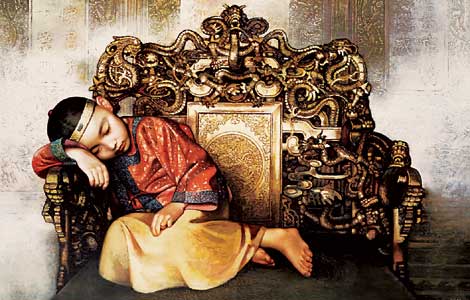Companies
Outdoor success
Updated: 2011-08-05 11:53
By Meng Jing (China Daily European Weekly)
|
|
Companies see rosy future as demand for sports gear expected to increase
Qi Jun was mistaken for a construction worker when he handed his business card to a top sports journalist in the late 1990s. That was not because of his tanned skin or his strong build but because the former marketing director of Gore-Tex had introduced himself as someone who worked in the outdoor sports industry. Gore-Tex, a major fabric supplier for outdoor apparel and gear makers in the United States, already had a solid reputation among Western outdoor sports enthusiasts. But few people in China - even those in sports - were acquainted with the term "outdoor sports" at the time.
"Heavy lifting done in the open air was people's first guess when you used the term," Qi says.
In the West, people have a long tradition of engaging in outdoor activities, but it was not until 1995 that the first outdoor product store opened in China.
Annual sales of outdoor products reached 7 billion yuan (756 million euros) in 2010 - less than sales in the US in a single month. Data from the Outdoor Industry Association in the US put sales at $1.23 billion (856 million euros) in June.
The belated takeoff of the market in China and its still limited size did not deter international brands from making an entre into the market.
The North Face, one of the biggest players in outdoor products in the US, is set to make China its second-largest market in the next two to three years.
"We know it has the potential to be the second-biggest market in the world for the North Face, and the size of China, given its economic growth," says Aidan O'Meara, president of VF Asia Pacific, which owns The North Face.
"And the trend there is a growth in leisure time in China; people are having more opportunities to travel and engage in leisure activity."
Since entering the Chinese market in 2007, The North Face's business has grown sevenfold, well beyond VF Corporation's expectations.
"We are very excited about the potential for continuing the trend over the next five years," O'Meara says.
Sales of outdoor products in China have grown 47 percent annually on average over the last 10 years, growth that is set to continue for another 10 years as the economy steps up a gear, industry insiders say.
"An average 47 percent growth over 10 consecutive years is a stunning record in any industry," says Han Yungang, vice-chairman of China Outdoor Commerce Alliance (COCA).
Han sees a rosy future for the niche market. "About 25 percent of people in South Korea are outdoor sports participants, while in China the number is about 0.5 percent. You can clearly see a huge market potential here."
Annual sales are expected to climb to 150 billion yuan by 2020, he says.
The smell of financial success has lured many international brands, and the sluggish economy in the West after the financial crisis has added impetus to the push.
The number of international outdoor product brands jumped from 286 in 2009 to 325 in 2010, according to COCA.
Since Laya Outdoor Product Co was founded in 2009 it has successfully introduced six European brands to the Chinese market, including Italian boots from La Sportiva and Swiss women outdoor clothing from Wild Roses.
Seeing a 30 percent to 40 percent growth in sales at every purchasing fair, held twice a year, Lin Zhengsheng, deputy general manager of the Beijing company, is determined to bring more European brands to China to enrich his company's product portfolio.
However, foreign outdoor brands need to surmount many hurdles before they can win Chinese customers over.
"Take shoes for example," Lin says. "European people's feet are different slender than those of Chinese, which means all boots from Europe have to be customized according to the Chinese foot shape."
Apart from that, Chinese people have different tastes in style and color, he says, and taken together the divergences between the customers are huge. That means one cannot simply move outdoor products from European shelves to Chinese ones.
O'Meara of the VF Corporation echoes Lin. Apart from the differences in body shapes, there are emotional differences between Chinese and Western outdoor activists.
"In China the sense of community and engaging (in outdoor activities) with a group is more important," O'Meara says. "But in the West, to some extent, it is about individual performance and individual accomplishment."
Understanding such differences is crucial to The North Face in developing its business in China, he says.
This is where domestic outdoor product makers feel they have the inside track in understanding Chinese customers.
Sheng Faqiang, chairman of Toread, a domestic outdoor outfit maker, says he has no fear of international brands.
"We understand Chinese customers better. Not only about the body shape but also about their needs and desires in outdoor activities."

Specials

Lifting the veil
Beijing's Palace Museum, also known as the Forbidden City, is steeped in history, dreams and tears, which are perfectly reflected in design.

My Chinese Valentine
Local businesses are cashing in on a traditional love story involving a cow herder and a goddess

Space race
Homebuyers are learning the hard facts of supply and demand: too many cars and too few parking spaces.
